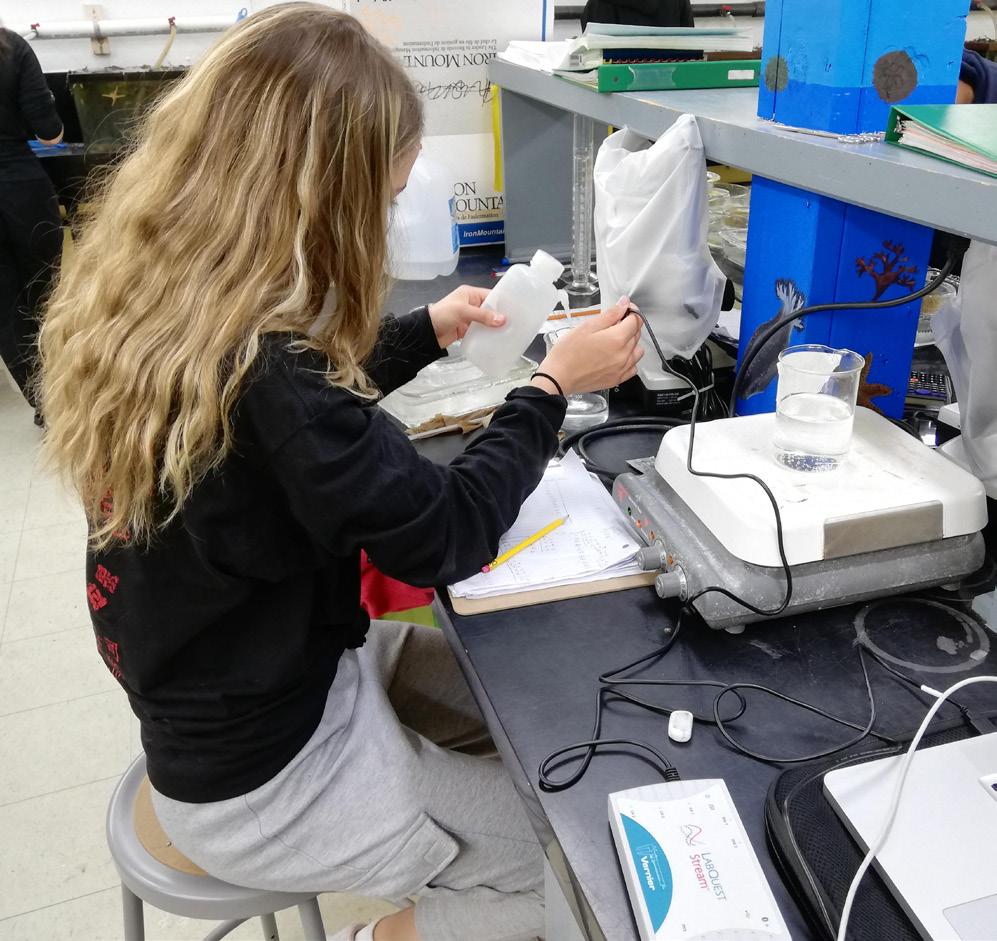
2 minute read
Learning Meets Adventure at the Bay of Fundy
BY ASHLEY RABINOVITCH, Writer
With contributions from Eloise Valasek (Pre-U ’20) & Eferata Yimer ’19 (Pre-U ’20)
For students with an appetite for adventure, the Bay of Fundy makes a spectacular classroom. Wedged between New Brunswick and Nova Scotia, 300 kilometres of jagged cliffs, sandstone caves, and red mudflats frame one of the world’s richest marine ecosystems.

Members of the Pre-U Class of 2020 at the Huntsman Marine Science Centre
In September 2019, Eloise Valasek (Pre-U ’20) and Eferata Yimer ’19 (Pre-U ’20) joined a group of Pre-University biology, chemistry, and environmental studies and societies (ESS) students on a five-day educational trip to the Bay of Fundy. “There could not have been a better way to start off the year,” says Eferata. “The Huntsman Marine Science Trip, named for the local science centre, gave us the chance to feed our curiosity.”

The Bay of Fundy is home to the world’s highest tides, with a tidal range of 42 feet. Its waters teem with more than 2,300 distinct marine species, offering nearly endless opportunities to learn and explore. The students took advantage of their surroundings to fulfill the requirement for their Internal Assessment, which involves an experiment and written paper. During the trip, they split their time between making field observations and conducting lab experiments. Many students observed how animals like crabs, starfish and barnacles reacted to changes in temperature, salinity and pH within their environment. “All experiments were conducted in an ethical manner and under the supervision of our mentors,” Eloise affirms. The three trip mentors—Ms. Commerford (biology), Mr. Zuccheroso (chemistry), and Mr. Skrovanek (lab technician) — stood by to contribute their expertise as they monitored student experiments.
Outside of the lab, the group enjoyed a trip to the local aquarium and met with the staff at the Huntsman Marine Science Centre, who taught them enough about taxonomy to identify several species they came across on beach walks. The students point to the group’s whale-watching excursion as a highlight of the trip. “We spotted three North Atlantic right whales, one of the most endangered animal species on the planet,” says Eferata. From the students’ perspective, the trip was a perfect combination of “new friendships, memorable experiences, and unique learning opportunities.”

Student conducting lab experiments at the Huntsman Marine Science Centre
For many students, particularly those who had never visited Atlantic Canada, the trip introduced an ecosystem that stands in stark contrast to anything they had ever experienced before. “I highly recommend this trip to other students,” says Eloise. “Our experience deepened our scientific knowledge and exposed us to more of the biodiversity and adventure that Canada has to offer.”










